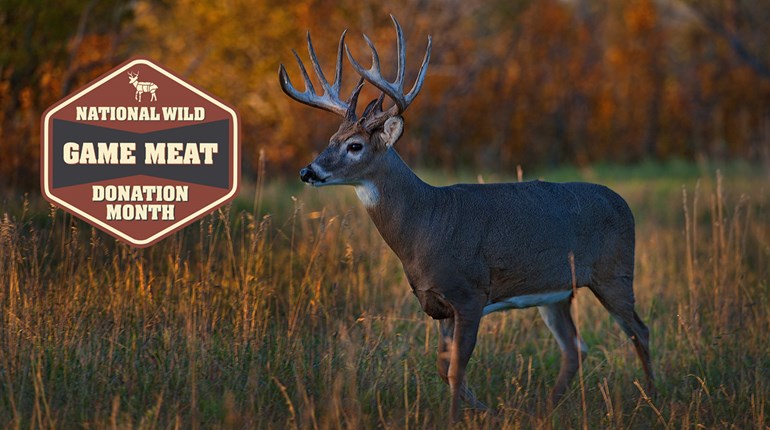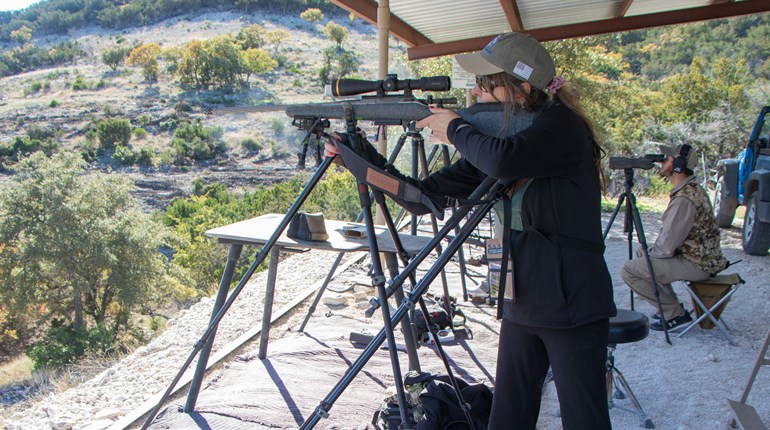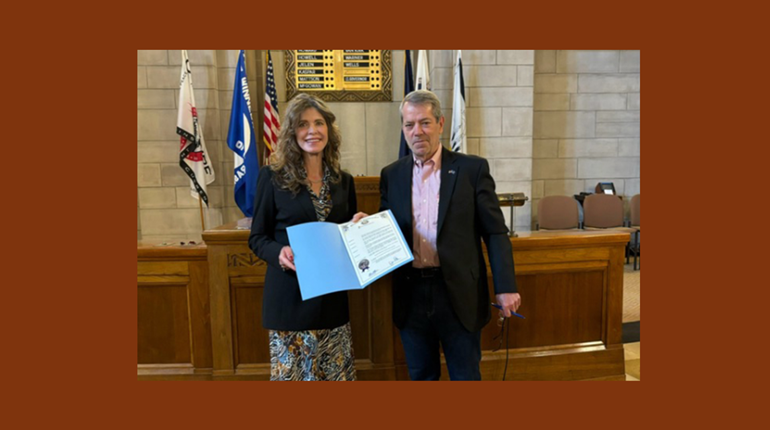It could’ve been a beautifully lit Hollywood scene. The 6x6 bull raked the oak brush in the late-afternoon sun. We watched from across the meadow 200 yards away, tucked against the oak brush with our Montana Decoys cow elk poised behind us to our left. Phil cow-called, the bull spun and started coming. My first archery bull. It froze at 45 yards, locked on the decoy. Chest pounding, I set my sight on 40 yards and drew my Mathews Jewel. Then the bull started walking to the decoy so I waited at full draw. Phil cow-called and stopped it broadside at 25 yards. I settled my pin and shot, sending the bull back across the meadow. Phil cow-called to stop it, and I waited breathlessly for it to fall. But it merely paused to look back before taking off again. There was no arrow in its side.
Adrenaline surged as it registered I’d shot over the bull’s back—the same mistake I made the year before in my second season of chasing whitetails with archery tackle. When I locked onto the bull at 40 yards, I was so focused on shooting technique I forgot to adjust my Truglo single-pin sight as the bull closed in.
I was silent on our walk to the truck. The serenity of the Western sunset helped me tap into a peace as my spirit searched for a way to accept my mistake.
I tried to chalk up the experience as a teachable moment. Still, I’d just missed a 6x6.
The next day was the season’s last. On my own, I raced against a sinking sun to cut off a herd 250 yards away in the aspens—three bugles, three different bulls. It was well after legal shooting light when I got in range. I moved amongst them, watching the frantic herd bull scramble to keep his cows together as the two satellite bulls pushed closer. With the big moon up, I stood against an aspen, gulping shallow breaths. Grunting, the giant monarch ran circles around his cows 20 yards ahead, stopping only to scream, its polished, hard antlers pressing into their sides in a relentless roundup. At 15 yards, the bull was so close I smelled him, heard his raspy breathing, saw his body drenched with sweat. I would never see this rutting scene during rifle or muzzleloader season. In bow season, there is no bang from a gun to scatter the herd, no such thing as a 200-yard shot. With archery tackle you must be patient, listen, get close and observe what elk do. Disappointment over season’s end strengthened my resolve to do it again the next year.
That was September 2012, only my second archery-elk season, though I’d logged seasons of experience with a rifle in hand. I’d begun my quest in 2011 at friend Rocky Pappas’ Nine Mile Guest Ranch in Meeker, Colo. My effective range was 20 yards then, which is fine when you’re planning an ambush at a waterhole. But while Colorado boasts 300 annual days of sunshine, few fell in September that year. And the rut was not in high gear. I never got close in Colorado.
Two weeks later, I met Phil at the R&K Hunting Company in Wyoming—same story. But I did learn to use a diaphragm call. I also learned bowhunting elk on foot means you can’t skip the gym, considering the miles I trekked among the deadfalls, heavy timber and valleys of the rough country. Fortunately, leading the way was Phil, who in 2012 became my fiancé—a testament to how hunting brings people together.
I said 2013 would be my year. I get intuitive sometimes, wondering if everything is a sign of something great to come. In 2013 I had good reason. Phil and I got married that June near his ranch outside Montrose, the 2013 All-American City of the Year. We were hunting near where we said our “I dos”—at a place called Cornerstone, a 6,000-acre property that hadn’t been hunted in years until Phil secured hunting rights in 2012. And I’d gotten my first archery whitetail buck in year three (2012), so I figured I’d get my first archery bull in year three (2013).
In September I met Phil in Colorado, the place that for me is the epitome of the West: cowboy hats, boots, knives and sterling silver belt buckles; spruces and aspens; Western big game; and top-of-the world views. Life was good. It just would be better with an elk.
If I were out to just kill an elk for meat that can’t be beat I’d have waited for rifle season. But I wanted to hunt elk, to try to get close—even if I went home empty-handed. Archery season provided no better connection to nature.
I was mighty connected the first morning, catching whiffs of stinking bulls. When the rut hits, bulls wallow, and my Jewel and I had to get close. The odor is a bull’s urine as it pees on itself and in a wallow—unless it’s busy raking brush with its antlers. One bull was so covered in mud it appeared black, sporting branches in its antlers, all ready for the big date.
“Hey, Phil,” I said. “Wouldn’t it be neat if my first archery bull were my biggest ever?”
“Yeah, wouldn’t it?” he replied. “It could happen. You did it with whitetails.”
We got close to bulls twice as they launched into low-contact sparring. The trick was getting to them before they crossed the property line. I thought of how different the terrain was in Colorado compared to back East. Back home I was lucky to see past 100 yards, with or without a binocular. In Colorado my Zeiss helped me see hundreds of yards, yet sometimes I’d miss that ear or antler tine. Looking doesn’t equate to seeing the entire field of view. Phil could see and was aided by well-honed peripheral vision that allowed him to focus and spot a lot of game from a distance, often with his naked eye before his binocular confirmed it.
Mornings were for still-hunting. We pinpointed several bedding areas—primarily cooler, north-facing slopes—and played the wind to avoid spooking the herd. Afternoon plans tended to involve heading toward those same slopes, sitting in the occasional ground blind. Dissecting the hunting area raised the odds of success as I learned the property and started pinpointing landmarks and points critical to elk movement. The plan: Move slowly, listen and look for sign so we’d hear and spot elk before they spotted us.
Thundering hooves meant we weren’t so sneaky, as a lone bull busted out of cover ahead.
It was this half of the “we” that had let down her guard.
“I can’t believe I did that,” Phil said. “That was the big 5x6. He never made a peep.”
“How’d you know which bull it was?” I asked.
“You can’t miss that whale tail. This bull knows how to play the game. He’s still doing his own thing while smaller bulls spar over the cows. It’s just a matter of time before this wise, old bull steps in and takes over the herd.”
I suggested we sit by the fence and wait until the small herd below came up to cross the property line. Thermals axed that. Before sunrise, as elk travel uphill from food to bedding areas, thermals are still moving downhill. When you’re above them, the air—and your scent—heads right to them, making it tough to head them off. In the afternoon, as elk come down to feed, thermals are moving up until the air cools at sunset—just one reason wearing Scent-Lok and knowing how to position yourself in the wind is so important.
One afternoon we encountered “Squeakers” in the ponderosas, a bull I named before seeing it based on its bugle. “You can’t always judge a bull by its bugle,” Phil said. “I’ve rarely heard a small bull sound old, but on occasion a big bull will sound like a spike.” Based on the exchange between him and Phil, Squeakers was on his way.
I got set up. Minutes passed. Muscles tensed, I struggled to maintain my position. Sure the bull wasn’t close enough yet to spot me, I moved. Squeakers barked and split. All my time, energy and effort until now—the practice sessions, the meticulous scent-control, the steep treks—was all for nothing. Squeakers was a 330-inch bull.
I’d lost count of the inclines I’d maneuvered. At one point, despite regular cardio workouts, I was gasping for air at 10,000 feet. I remembered the canister of O2Unleashed in my pocket and took a few inhalations. I recovered fast enough to get within 50 yards of a 5x5 before getting pinned by spikes. The 5-point passed out of range.
One morning Phil stopped to glass a canyon. “Big bull,” he said, as I ranged it at 439 yards on the skyline with seven cows. “I bet it has 24-inch thirds. It’s that giant 5x6 that was by itself the other day. He’s one of the top five bulls I’ve seen here.”
Binoculars up, I made out the whale tail, staring at how its points wrapped around its main beams like flames. “This is the bull I want,” I announced. Phil said, “Yeah, me too!” Seriously, I explained I wouldn’t get it for two more days—on the 22nd, our three-month anniversary.
“So should we just hang out in town for two days?” he asked.
“No, we can keep hunting—but I won’t get him ’til then. You proposed to me on the 22nd, we got married on the 22nd so 22 is our lucky number. Phil seemed like a non-believer when he said, “Oh, yeah, just like picking one out at the store.” I didn’t mention he’d get a bull, too.
That afternoon we headed for where I’d missed my 6x6 the previous season so Phil could show me his new landscaping project. There was a seep on our side of the fence that bulls wallowed in, but there wasn’t enough water to drink. So last year the elk rarely crossed until after video light, which ends well before shooting light. Phil had rented a mini-excavator and dug out an area that filled with water. Now cows had reason to cross before dark—and they would drag the bulls. The prior week, Phil had popped up a ground blind here for Mathews’ Joel Maxfield, who dropped a 6x6 that turned out to be his biggest archery bull ever. As if Joel had dropped the only bull in town, I asked to hunt closer to where we knew some elk were bedding and sit here the next day instead, certain lightning wouldn’t strike twice so soon.
Seemed I was right. The next day, no elk came to the pond before dark. That fueled my prediction (the 22nd was a day away). As we left, Phil pulled the SD card from the trail cam to check it. My heart sank when photos from the previous afternoon showed a bull larger than Joel’s standing in the pond ... at 15 yards ... at 5:56 p.m.
It poured that night. That morning the wind whipped hard. We headed out earlier than usual, knowing it would be tough for the elk to hear us and for us to hear them. Phil got the camera and, thinking about the 5x6, I asked, “Where’s your bow? It’s the 22nd.” Reluctant, he grabbed it, adding our best chance was to get well ahead and above the elk. Despite the wind, our HECS and Scent-Lok clothing gave us a chance.
We hiked a mile in the dark and for the first time never heard an elk. Eyes tearing, I plodded behind Phil to where elk moved through the aspens every morning. No bugles.
But hunting luck spins on a dime. As the sky brightened we made out some detail. We were well ahead of them. We dropped down onto a bench to call and listen. A bull answered, barely audible, the eerie sound trailing off rapidly in the wind. Elk were moving uphill. I skipped a breath when I saw the herd bull—my 5x6. Was it intuition or had I convinced myself it was preordained?
We dropped down another bench. The wind slowed. I scrambled to find a place where I could shoot, wishing for a ground blind. Let your camo do its job, I thought, feeling exposed in front of the brush, searching out shooting lanes. Elk were moving. The 5x6 bugled and paced, then chased off a 5x5 to the left. I thought, Dad, I don’t know what you’re doing in heaven—hunting, fishing—but I’m going to get my bull. Please give me a sign if you’re watching.
I glanced at Phil holding the cow decoy underneath the camera tripod to my left. Below us cows circled right, a young 5-point circled left, putting the 5x6 smack in the middle. Another bugle. My chest thumped. What if it catches me drawing? What if I can’t stay steady? What if a branch blocks its vitals? … But it’s the 22nd.
A spike passed to the right at 45 yards then my bull stepped into an opening. It was the only elk that came close. Phil stayed silent. The bull was coming.
There were flashes of beams, hide and face. Then I saw the bull’s heaving right side as it walked left-to-right uphill through the trees into another opening at 22 yards. Phil cow-called to stop it. The bull looked right through us. Stunned that I was undetected, I hit the release, exhaling after hearing the definitive thwack. The bull whirled and sprinted downhill. Phil bugled to stop it, and we watched its hooves flip over its head at 70 yards.
It suddenly registered that when Phil bugled, a bull answered above us. “He sounds good!” I whispered. “Maybe you can get this one!”
With my first archery bull on the ground, I took the camera. Phil picked up his bow. The bull circled from behind to our right. It stepped out into the same spot mine had stood at 22 yards—a 6x6 framed perfectly in my viewfinder, staring through us, looking for elk, offering a frontal shot as Phil waited with his Mathews Chill at full draw. Finally, it stepped to its left. Phil stopped it broadside, sinking his Easton A/C Deep-Six Injexion arrow into its right side in the same spot I’d hit mine. The bull ran off, crashing into an aspen a hundred yards to our right.
Then a rainbow appeared. From our vantage point, Phil’s bull was lying at the end of that rainbow—a sign from Dad? I wouldn’t even tell the story if it weren’t on film and scheduled to air on the Sportsman Channel in 2015 on “Phil Phillips Unleashed.”
“We’ve got bulls piled up all over the mountain!” Phil said into the camera. “We had a great year this morning.”
This was my third year of archery elk hunting: Clearly, 3 is my lucky number. Obviously, so is 22. If I keep bowhunting, I’ll figure out the rest and play the lottery.




































